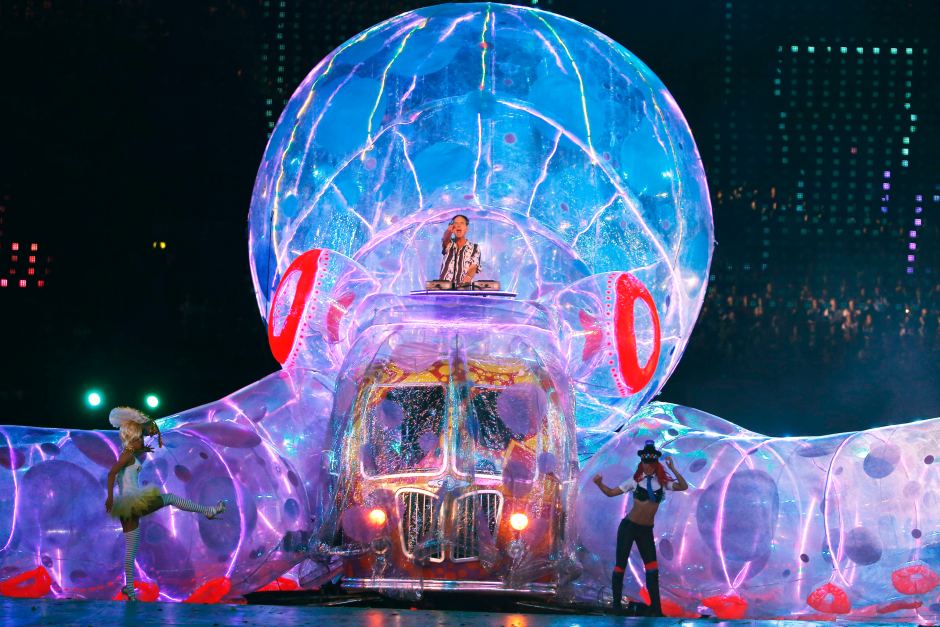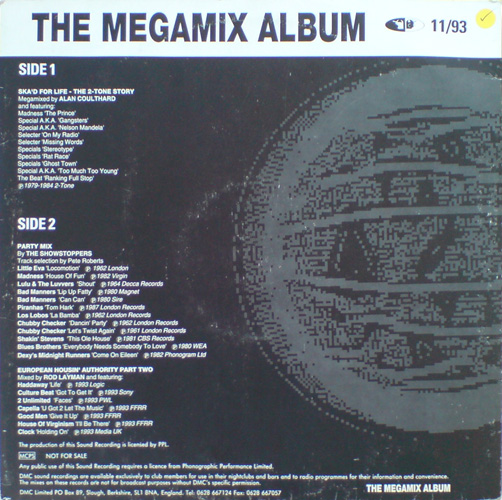
Lately, it seems to be a regular occurrence to see well-known superstar DJs outed for what I call “miming a set”. That is where a big-name DJ will play a pre-recorded mix while pretending to DJ at a large club or festival. First, it was Steve Angello, and now David Guetta has been busted several times for this… both artists using the rationale that a visual / pyrotechnics show had to be in sync with the music. Even Fatboy Slim got up to a bit at the Olympics closing ceremony.
Similar behaviour was also famously highlighted by deadmau5 recently, when he let out a badly kept industry secret – that EDM performers (especially who’ve come from a production rather than a DJing background) often basically stand there pushing buttons when they play “live”. Regardless of the thinking behind such actions, or the claims of how much of a set is mimed versus actually played, these incidents still build much controversy among fans and other DJs.
They expose a rift between the old-school view of the DJ as a musical curator, with the crowd an essential part of a two-way experience, and a more recent view of the DJ as a perfomer on a stage, with light show, fireworks and the rest, all carefully choreographed to produce a more impressive show. But is it sometimes justified to mime? And if so, how should DJ/producers go about miming with integrity, assuming that’s possible?
The problem isn’t the miming, it’s the duplicity…
I’m sure some DJs will hold tight to the idea that faking a set any time for any reason is just plain “wrong”. I partially agree, but I also think about in the past when labels, artists, and DJ remix services would make and release “megamixes”. For those who never saw this, it was a record usually 10 to 20 minutes in length with a long mix made of tunes that could either be from one artist, one label, or some style of music.

DJs would play these megamixes at times when they got multiple requests of one artist, or even just to change things up, or especially for a 10 to 15 minute window where they could go use the bathroom or get a drink.
I honestly have no issue with any DJ playing one of these, or making their own. To ridicule guys like Angello or Guetta for using this would be a hypocritical thing for the DJ world to do. I mean, guys in the past would make mashups, remixes or megamixes on reel-to-reel tape decks! A bit of pre-production is as old as the recording devices used to do it on.
No, the problem is the duplicity. The idea that you come out and mime (whether 15 minutes or the whole set), and try to make patrons believe you played. Patrons run out and pay $30 or $100 just to see these names, and to only see them dance around and not DJ is literally, I feel, a rip-off. It also insults the work many DJs do week after week in an effort to be good at their craft.
Why not come clean?
The one underlying message I’d love to send out to those superstars is: “We get it.” At least, I get it. I know in this world of DJing you can only go so far with what we do. You look for unknown tunes no one has yet, make your own tunes, do four decks, or even get all “James Zabiela” on the gear with samples and effects.
But after a while, you have to go visual to bump yourself up to the bigger leagues. Tïesto did it with his stage set, Bad Boy Bill invested in visuals and gogo dancers. And now, the festival headliners are trying out laser and pyrotechnic shows synced to music. I understand it’s very hard to sync a show like that with live DJing.
Here’s a little secret, though… most fans and audience members can tolerate a little miming or lip syncing if you tell them in advance. If any of you ever saw Madonna’s Blonde Ambition tour, you might remember when she did a ballroom dance/lip sync number with a dancer dressed as Dick Tracy.
Why did no one give her flack for that? Mainly because she told people right there in a playful way she would do this. No crushed expectations or anything, plus she sang most of the concert, thus not cheating the audience.
How DJs should approach miming
So here’s what I think DJs who are planning on miming sections of their sets could try:
1. Tell the audience in advance
Advertise it even. You spent loads to make this incredible visual show. Toss up on your Facebook and Twitter how you’ll be playing a specially-made megamix in the last 15 minutes of your set which will sync to an incredible light and pyrotechnic show. (We could have guessed Fatboy Slim would mime his one mix at the Olympics, but you get what I mean.)
The beauty of this is you’re now spilling your guts and managing expectations. If anyone wants to get mad after the show when a “miming” video or image appears, you can hold your ground in that you told everyone beforehand. Your fans will come to your aid, too.
2. Remember to be a DJ, first and foremost
The one concern I have with the increased usage of these visual shows is we’ll suddenly see a headliner decide to forgo playing and have a one to two-hour pre-recorded mix playing with the “megamix in sync with the visual show” excuse (as deadmau5 points out, EDM producers who perform live often do little more than just this).

I and many others can tolerate a part of the set this way, but when it’s suddenly most of or all of the set, then I have to ask what you’re selling then? Why even book you when one can just pay for a mix CD and the visual show?
With all the visual tricks and other big stage stuff, the fact you’re there to DJ a set should be the primary focus. So walk in and play! I personally don’t care if you manually play on vinyl or CDJs, or use a laptop with sync. Go and play. In fact, you should show authenticity by pulling the cameraman over and move the volumes and platters around to prove you’re playing live. People will respect you for that.
3. Give out or sell your megamix
Why not? I teach many lesser-known DJs to always multipurpose possible promotional materials. Why just make this to play at the festivals? Toss it up on Beatport or iTunes. What is treated like a ruse will turn into a great souvenir for your fans. If they enjoyed the show, be it in person or even online, they’ll want that megamix to pump on their iPods, and DJs may even want it to play in clubs. It’s a great way to make a big positive out of what currently gets treated like a negative.
The bigger picture…
So as far as the issue of miming goes, that’s it. Problem solved. Integrity is maintained and the DJ gets his or her big finale. Of course, the mainstream explosion of dance music in the US is throwing up all kinds of other questions, which were only partly dealt with in that last dance renaissance, Europe’s huge late 90s trance scene.
Should dance music be called “EDM”? Has something been lost between marathon DJ sets in the cosmopolitan anything-goes clubs of Ibiza and the glittering choreographed stage shows of Vegas? Should button-bashing producers stay out of DJ booths, and should DJs stop paying other people to produce music for them, which they then claim as their own? And that’s just the surface…
As the latest wave of dance music / EDM explodes across the States, no doubt we’ll be revisiting some of these points again over the coming months.
What do you think of the issue of DJs miming? Should superstar DJs just stop these visual shows? Or would they be better levelling with people on when there’s going to be a “mime” moment? Please share your thoughts in the comments.








